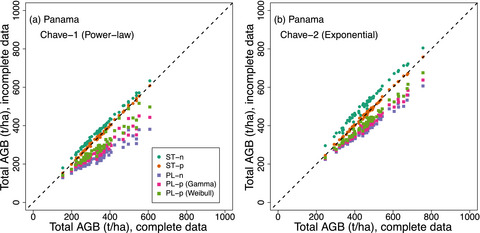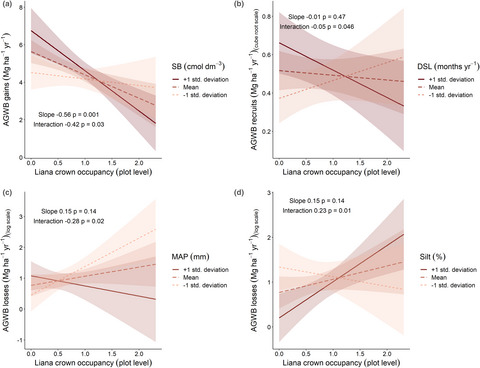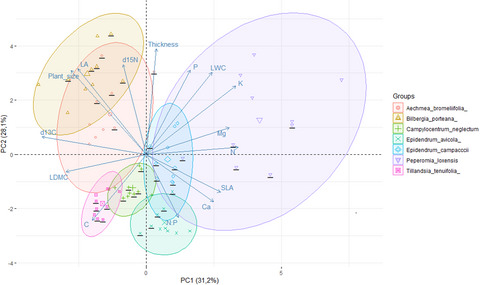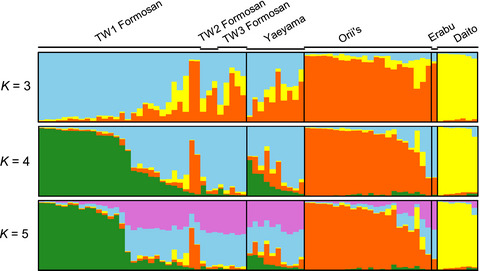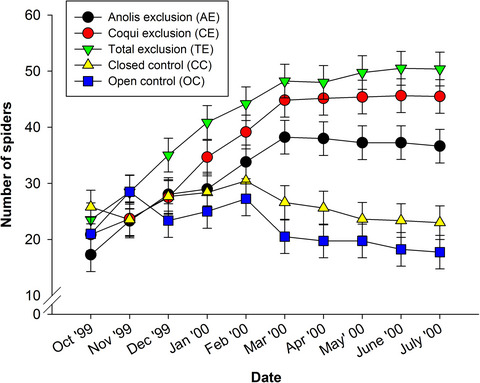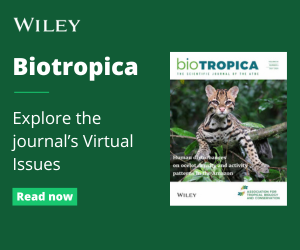Journal list menu
Export Citations
Download PDFs
ISSUE INFORMATION
EDITORIAL
Biotropica announces a new paper category: Natural History Field Notes
- Pages: 352-353
- First Published: 23 March 2021
INSIGHTS
Molecular diversity of dragonflies in three high-elevation Andean tropical lakes through DNA barcoding
- Pages: 354-358
- First Published: 15 February 2021
Functional robustness of seed dispersal by a remnant frugivore population on a defaunated tropical island
- Pages: 359-366
- First Published: 10 February 2021
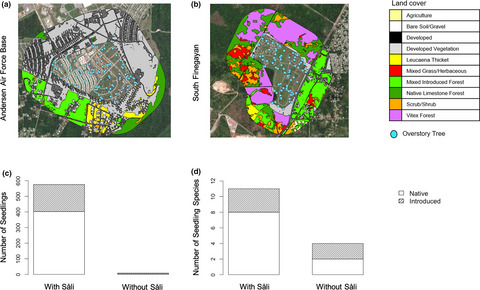
We surveyed zoochorous seedlings at an urbanized site on Guam with a remnant population of frugivores, and an otherwise similar site lacking all frugivores. Both seedling richness and abundance were much higher at the site with frugivores, providing hope that small populations can retain or restore ecological function.
NATURAL HISTORY FIELD NOTES
When waterholes get busy, rare interactions thrive: Photographic evidence of a jaguar (Panthera onca) killing an ocelot (Leopardus pardalis)
- Pages: 367-371
- First Published: 28 December 2020
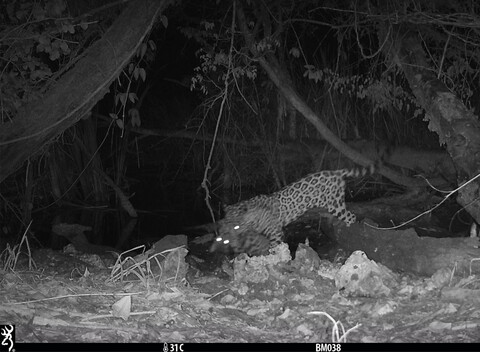
During a camera trap survey conducted in Guatemala in the 2019 dry season, we documented a jaguar killing an ocelot at a waterhole with high mammal activity. During severe droughts, the probability of aggressive interactions between carnivores might increase when fixed, valuable resources such as water cannot be easily partitioned.
REVIEWS
Spatiotemporal dynamics of the ant community in a dry forest differ by vertical strata but not by successional stage
- Pages: 372-383
- First Published: 08 February 2021
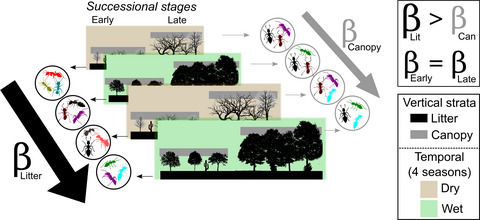
We found highly dynamic ant communities in time, with a high species turnover defining the spatial and temporal β-diversity in both canopy and litter communities. We found that the canopy ant communities were much more stable in time than the litter ones. While we also detected high temporal dynamics of ant communities across successional stages, there were no differences in β-diversity patterns over time between early and late successional stages.
Rhizophora zonation, salinity, and nutrients in the western atlantic
- Pages: 384-396
- First Published: 04 February 2021
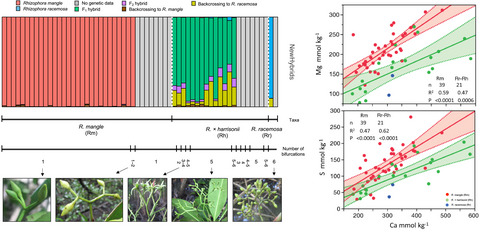
Rhizophora is the dominant genus of mangrove forests on the Atlantic coast of northern South America. What determines the zonation frequently observed in sympatric populations of the two neotropical species, R. mangle and R. racemosa, and their hybrids, R. × harrisonii, is an open question. The most widely held hypothesis is that differences in salinity tolerance among the taxonomic groups explain the observed zonation. To address this question, we analyzed the elemental composition of soils and canopy leaves from 60 Rhizophora spp. trees distributed in different intertidal zones of an estuarine site of the Paria Gulf, Venezuela. Using morphological characters and microsatellite molecular markers, we identified 39 pure R. mangle, 19 hybrids, and only two pure R. racemosa. We found that both intertidal position and taxonomic groups explained most of the differences in leaf variables measured across trees. The ratio Mg/Ca, however, was higher in R. mangle than in R. racemosa and hybrids regardless of intertidal position. Moreover, at some specific intertidal position, R. mangle differed from R. racemosa and hybrids in the values of C, N, K, Mg, Fe, Mn, C/N, K/Ca, S/Ca, and δ13C. We conclude that despite the scarcity of R. racemosa and the absence of a clear species zonation, our results suggest that R. mangle copes with salinity differently than R. racemosa and R. × harrisonii.
ORIGINAL ARTICLES
Estimating carbon biomass in forests using incomplete data
- Pages: 397-408
- First Published: 18 November 2020
Landscape heterogeneity shapes bird phylogenetic responses at forest–matrix interfaces in Atlantic Forest, Brazil
- Pages: 409-421
- First Published: 30 November 2020
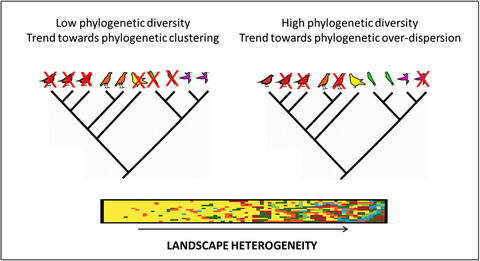
Phylogenetic diversity varied significantly between land cover types, but this did not occur when we removed effects associated with species richness, suggesting that all land covers preserve similar levels of evolutionary history. Our best models showed a positive relationship between landscape heterogeneity and bird phylogenetic indexes of diversity and structure, but the strength of these relationships may be land-cover dependent.
Breeding and feeding habitat selection by an island endemic bird may increase its vulnerability to climate change
- Pages: 422-432
- First Published: 18 November 2020
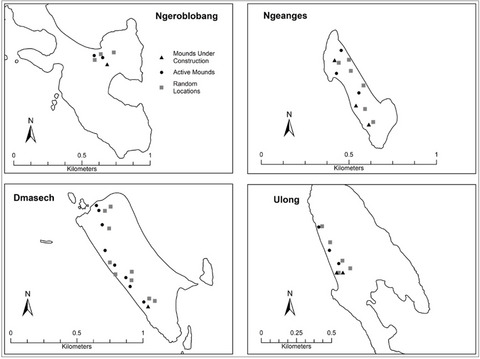
Micronesian Scrubfowl in Palau are an endangered species with rising sea levels a key threat to their restricted feeding and foraging habitat. We sought to characterise nesting and foraging habitat in the Rock Islands Southern lagoon of the Republic of Palau. Birds preferentially built mounds at the base of large ironwood trees (Casuarina equisetifolia) but selected sites with significantly more breadfruit trees (Artocarpus mariannensis) than random. Scrubfowl foraged in a non-preferential manner, making use of all littoral strand forest habitat.
Beyond the gardens: The extended mutualism from ant-garden ants to nectary-bearing plants growing in Amazon tree-fall gaps
- Pages: 433-441
- First Published: 29 November 2020
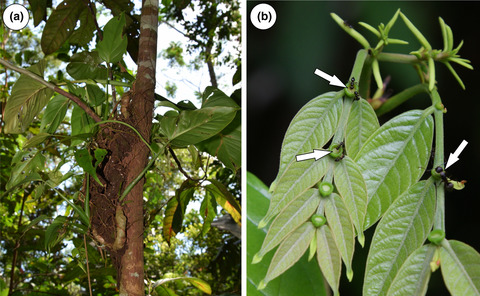
The ant-gardens are spectacular mutualistic systems commonly found in Amazonian treefall gaps, where aggressive ants build and lives on aggregates of epiphytes. These ants, however, are not restric to the gardens, but instead forages on the vicinities, particularly for extrafloral nectar, protecting other plants against herbivores. This extension of the mutualism can brings an expressive advantage to plants with extrafloral nectaries by change the competitive race to sunlight, particularly those growing in a transient environments, as is the case of gaps.
Clearcutting and selective logging have inconsistent effects on liana diversity and abundance but not on liana–tree interaction networks
- Pages: 442-452
- First Published: 27 January 2021
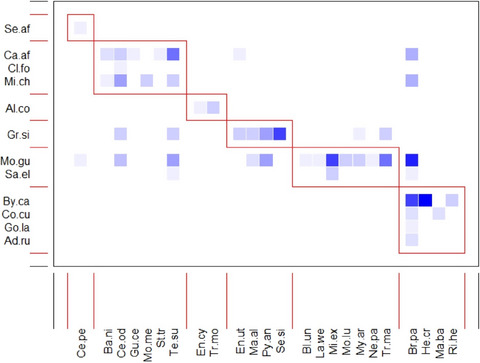
Lianas responded differently to clear-cutting and selective logging, resulting in decrease in liana assemblages in clear-cut forest, while selectively logged forest maintained liana community structure. Liana-tree interaction network was robust to logging, though topological roles of some species appear to shift in response to logging.
Long-term monitoring of seed dispersal by Asian elephants in a Sundaland rainforest
- Pages: 453-465
- First Published: 22 January 2021
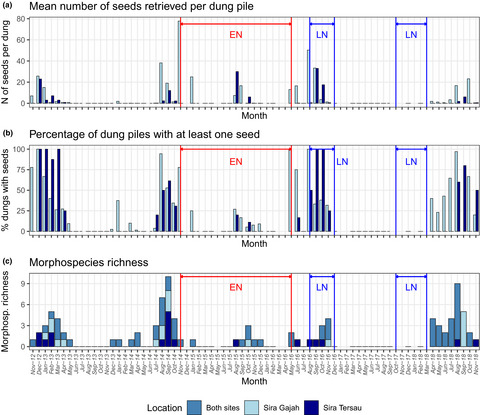
We conducted a long-term (6 years) monitoring of the seeds dispersed by Asian elephants (Elephas Maximus) in Sundaic forests of Peninsular Malaysia. We found that elephants dispersed seeds of at least 48 plant species from 25 plant families, with high spatial and temporal heterogeneity. Nearly half of these plants were classified as megafaunal syndrome plants, pointing out to more specialized elephant–plant seed dispersal relationships than in other Asian forests.
The role of deterministic succession during forest development within a southern African savanna
- Pages: 466-476
- First Published: 10 March 2021
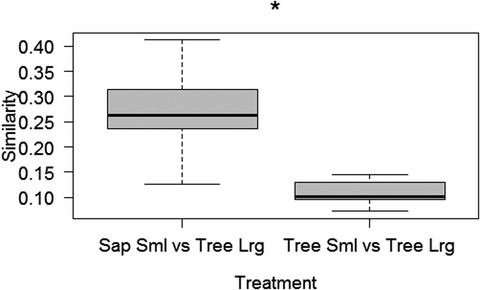
Woody encroachment, in the form of bush clumps, follows a deterministic process of succession. With succession, these clumps alter the microclimate beneath their canopy creating habitat suitable for the establishment of forest-type species, leading to the establishment of forest islands scattered throughout the savanna.
The functional ecology of bat pollination in the African sausage tree Kigelia africana (Bignoniaceae)
- Pages: 477-486
- First Published: 02 February 2021
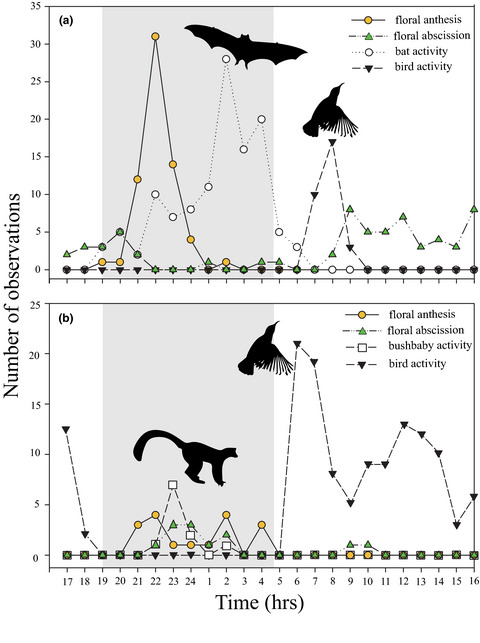
Plants often interact with a wide range of animal floral visitors that can vary in their pollination effectiveness. Flowers of the African sausage tree Kigelia africana are known to be visited by bats and bush babies during the night and by birds during the day. We found that flower opening corresponds with bat activity and pollen deposition on stigmas was twenty-fold greater per-visit by bats than it was per-visit by birds. We conclude that K. africana is primarily adapted for bat pollination but is also able to exploit other animals for pollination.
Does mining waste concentration in the soil interfere with leaf selection by Acromyrmex subterraneus (Formicidae)?
- Pages: 487-495
- First Published: 20 January 2021
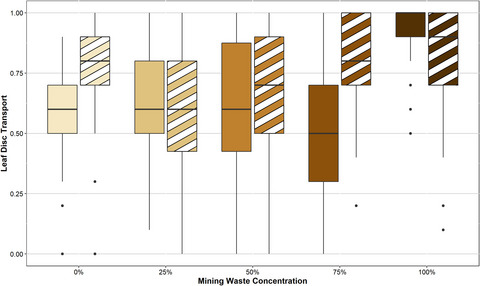
Revegetation programs are proposed to recover the soil and biodiversity of disturbed sites, this being the case of the Rio Doce basin, Brazil. This region was hugely affected by a mining waste dam disruption, whose leakage on the soil altered its chemical and physical characteristics, and consequently the physiology and performance of plants. The expected alterations of the plants can make them more attractive for leaf-cutting ants, as lower water content induces an increase of non-structural carbohydrates. In this context, we evaluated whether Acromyrmex subterraneus workers differentiate among plants grown on soil with different mining waste concentrations. Leaf discs from plants grown in soil containing 0, 25, 50, 75 and 100% of mining waste were simultaneously offered to ant colonies in a foraging arena. The number of transported discs from each mining waste concentration was recorded until all discs of any concentration had been transported. Leaf selection assays were repeated after 30 days due to the novelty effect phenomenon. Leaf thickness, water, starch and total soluble carbohydrate contents were determined. Leaf discs from plants grown in soil with 100% of mining waste concentration were preferentially selected in both selection assays. Leaf thickness and water content were significantly lower in plants from the aforementioned treatment, while starch and total soluble carbohydrates were higher. Results suggest that seedlings implanted in sites with high mining waste concentration are under high predation risk. Revegetation programs must measure the impact of leaf-cutting ants as both herbivorous and soil ecosystem engineers, for the best management of these insects.
It is not just about time: Agricultural practices and surrounding forest cover affect secondary forest recovery in agricultural landscapes
- Pages: 496-508
- First Published: 19 January 2021
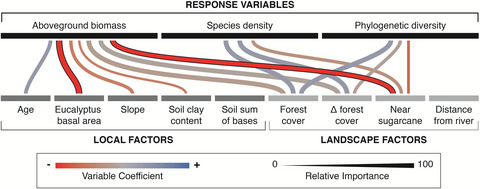
Local and landscape drivers influencing tropical second-growth forest (SGF) in agricultural landscapes of the Atlantic Forest of Southeast Brazil. Lines with black frame indicate drivers which the range of coefficient ± 95% coefficient interval was fully within negative values (i.e. drivers with a clear negative effect on the SGF attribute). While drivers related to human use have strong influence in forest attributes, age has a secondary role.
Climate and soil mediate the effects of liana density on forest dynamics
- Pages: 509-519
- First Published: 02 February 2021
Leaf trait co-variation and trade-offs in gallery forest C3 and CAM epiphytes
- Pages: 520-535
- First Published: 10 January 2021
Human impacts alter the distribution of fish functional diversity in Neotropical stream system
- Pages: 536-547
- First Published: 20 February 2021
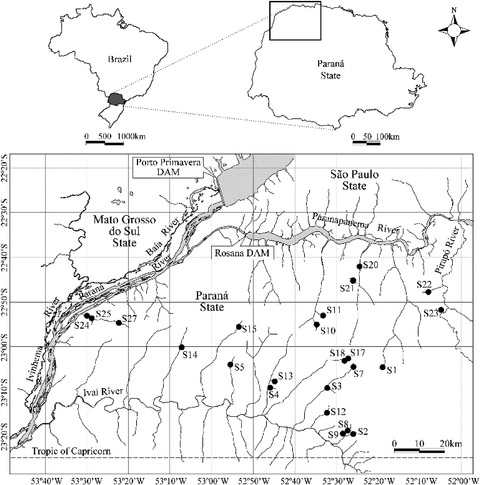
We investigated how anthropic interference and physical and limnological characteristics of streams changed fish functional trait distribution and their functional diversity in Neotropical streams located in Southern Brazil, encompassing Paraná, Paranapanema, Ivaí and Pirapó river basins. Our results showed that human impacts influenced functional diversity and functional trait distribution.
Population genetic structure of the insular Ryukyu flying fox Pteropus dasymallus
- Pages: 548-559
- First Published: 17 January 2021
Association patterns of swollen-thorn acacias with three ant species and other organisms in a dry forest of Panama
- Pages: 560-566
- First Published: 27 January 2021

We aimed at inferring the type of association of the poorly studied Pseudomyrmex simulans with swollen-thorn acacias, by comparing loads of non-ant organisms on trees with P. simulans with those of a well-known mutualist (P. spinicola), and a facultative parasite (non-defending; Crematogaster crinosa). We discovered that P. simulans-inhabited trees more often had Cecidomyiid stem galls and in greater densities than on C. crinosa-, and even more than on P. spinicola-inhabited trees. This pattern indicates an herbivory specialization or a potentially obligate weaker defender of the swollen-thorn acacias.
Butterfly and moth communities differ in their response to habitat structure in rainforests of Mount Cameroon
- Pages: 567-580
- First Published: 17 December 2020
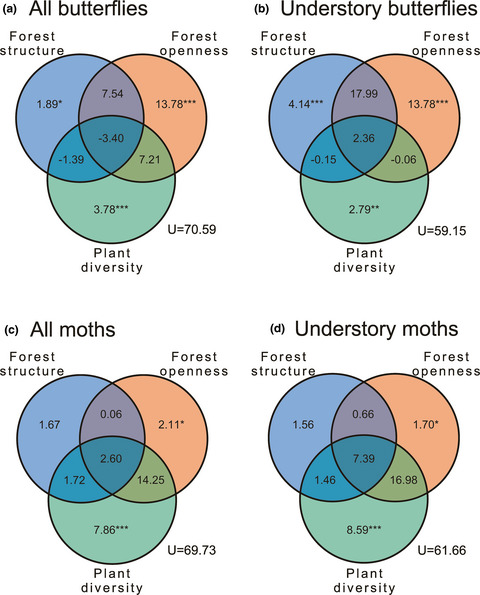
Communities of fruit-feeding butterflies and moths differed in their use of habitat in tropical rainforests of Mount Cameroon. Butterfly communities depended mainly on forest openness, whilst moths were largely affected by plant communities; these differences are probably related to the different day activity of adults.
Predicting tropical tree mortality with leaf spectroscopy
- Pages: 581-595
- First Published: 22 December 2020

Here we show, for a tropical rainforest in Borneo, how imminent tropical tree mortality caused by drought or girdling impacts leaf physiological traits and reflectance. We find that prior to mortality, there were significant (p < 0.05) leaf spectral changes in the red (650–700 nm), the NIR (1000–1400 nm) and SWIR bands (2000–2400 nm) and significant reductions in the potential carbon balance of the leaves (increased Rdark and reduced Asat).
Bats and hawkmoths form mixed modules with flowering plants in a nocturnal interaction network
- Pages: 596-607
- First Published: 17 December 2020
Testing the environmental prediction hypothesis for community-wide mass flowering in South-East Asia
- Pages: 608-618
- First Published: 28 January 2021

General flowering, in which hundreds of species synchronise their flowering at multi-year intervals, is a puzzle to ecologists. It is hypothesised that species taking part in general flowering time their reproduction to meet favourable environmental conditions for seedling establishment. We tested this environmental prediction hypothesis using 14-year weekly flower records of five Shorea species (Dipterocarpaceae) and daily meteorological data in a lowland rain forest in Malaysia.
Can variation in seed removal patterns of Neotropical pioneer tree species be explained by local ant community composition?
- Pages: 619-631
- First Published: 10 January 2021
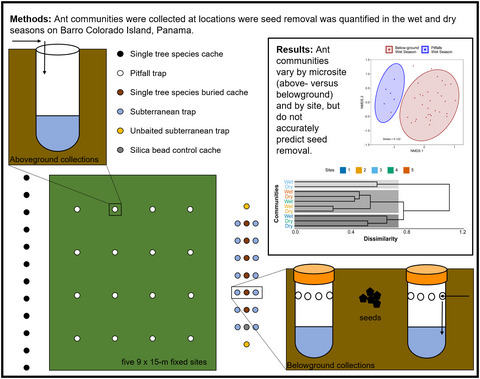
We combined observations of seed removal by ants with a characterization of the above- and below ground ant communities at five sites on Barro Colorado Island, Panama, to determine if seed removal patterns were associated with local ant community structure. Overall, our results suggest ant communities vary over relatively small spatial scales but exhibit a high degree of functional redundancy in terms of seed removal services provided for Neotropical pioneer tree species.
Population-level plant pollination mode is influenced by Quaternary climate and pollinators
- Pages: 632-642
- First Published: 12 January 2021
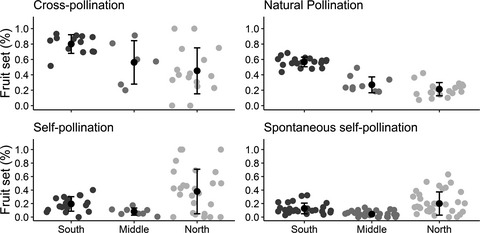
Attempting to separate the relative importance of current and historical processes on geographical patterns of the mating system of the tree species Curatella americana. Our results indicate that historical instability in climate has favoured autogamy, most likely as a reproductive insurance strategy facilitating colonization and population maintenance over time, while pollinators are currently modulating the level of cross-pollination.
Wood species identity alters dominant factors driving fine wood decomposition along a tree diversity gradient in subtropical plantation forests
- Pages: 643-657
- First Published: 20 January 2021

Wood species identity alters the relative contribution of microclimate and biotic factors to the decomposition of fine woody debris. This effect is mediated by multiple traits, collectively determining the sustrate attractiveness for decomposers. For wood preferred by decomposers, biotic factors including tree species diversity and decomposer colonization may outweigh microclimate in driving fine wood decomposition and vice versa.
Sharing sound: Avian acoustic niches in the Brazilian Atlantic Forest
- Pages: 658-670
- First Published: 17 January 2021
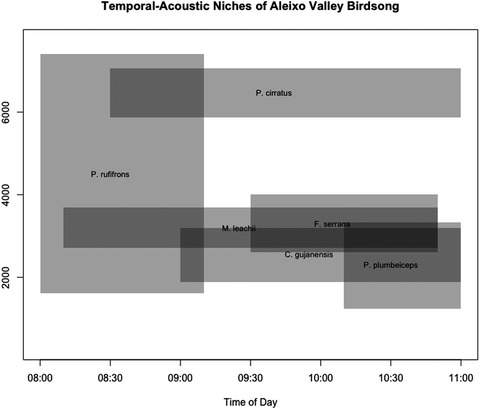
In dense tropical forest teeming with biodiversity, birds must compete to be heard amongst a cacophony of biotic sound. This study used principal component analysis to investigate the similarities between birdsong in the Atlantic Forest, finding remarkably synchronized behaviour and proving the need for further research regarding the dynamics of vocal behaviour of birds in tropical habitats.
Seed dispersal effectiveness by oilbirds (Steatornis caripensis) in the Southern Andes of Colombia
- Pages: 671-680
- First Published: 09 February 2021
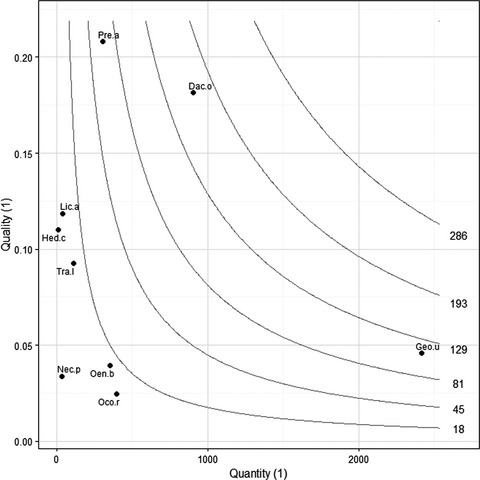
Despite spending much time in caves, oilbirds disperse seeds to suitable habitats of mountain and lowland plant species, including movement of large seeds. Higher dispersal effectiveness was found in non-breeding periods. Oilbirds provide an ecological service that seems to be unique in fragmented regions.
Lizard and frog removal increases spider abundance but does not cascade to increase herbivory
- Pages: 681-692
- First Published: 17 December 2020
Conspecific negative density dependence of trees varies with plant functional traits and environmental conditions across scales in a 60-ha tropical rainforest dynamics plot
- Pages: 693-702
- First Published: 24 February 2021
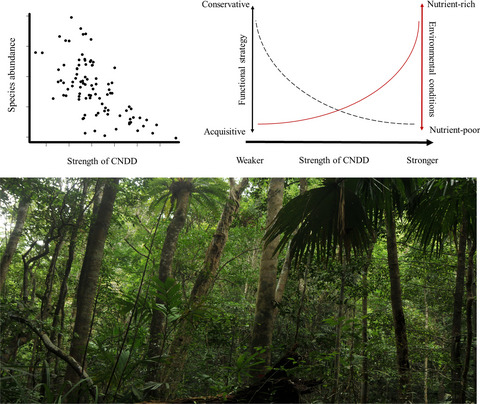
Conspecific negative density dependence is prevalent in old-growth tropical montane rainforest. It is less abundant species which suffer more from conspecific negative density dependence. Species with acquisitive ecological strategies exhibit stronger conspecific negative density dependence than those with conservative ones. Species show stronger conspecific negative density dependence in soil fertile environment.
Drought and soil nutrients effects on symbiotic nitrogen fixation in seedlings from eight Neotropical legume species
- Pages: 703-713
- First Published: 20 January 2021
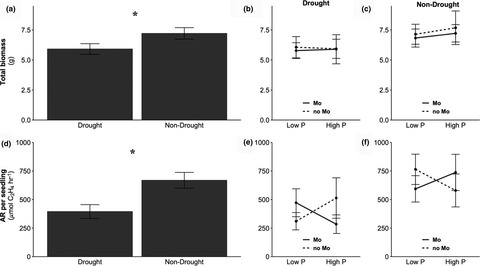
We grew eight species of Neotropical woody legume seedlings in a shadehouse for four months while manipulating soil water, phosphorus, and molybdenum availability. Drought reduced symbiotic nitrogen fixation by 27-41% and only reduced seedling biomass by 18%, but this reduction in symbiotic nitrogen fixation to drought may be species-specific. Therefore, predicting the response of symbiotic nitrogen fixation in the Neotropics to a changing climate, with expected increases in drought frequency and severity, may require grappling with the diversity of responses among nitrogen-fixing legumes.
BOOK REVIEW
“Welcome to the richest island on earth …” New Guinea
- Pages: 714-715
- First Published: 10 March 2021






